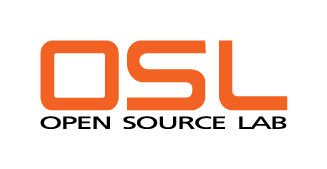|
Size: 2259
Comment:
|
Size: 2550
Comment:
|
| Deletions are marked like this. | Additions are marked like this. |
| Line 1: | Line 1: |
| Name: Don Park [[BR]] |
=== Don Park === === Contact Info === |
| Line 8: | Line 9: |
|
=== ToDos === * 04Jun Audit every node in NodeDB * 04Jun Point Wiki logins at profile db * 04Jun Add zeroconf to nodes and ap radar |
|
| Line 9: | Line 14: |
| === Interests === | |
| Line 18: | Line 24: |
| === projects === | |
| Line 25: | Line 32: |
|
=== links === |
|
| Line 28: | Line 37: |
|
IEEE 802.11 a,b,g specs (PDF) http://standards.ieee.org/getieee802/802.11.html |
Don Park
Contact Info
Email: donald.g.park at iname.com BR Homepage: http://www.personaltelco.net/~donp/ BR Work/School Info page: http://www.cs.pdx.edu/~parkd BR GPG Key: http://www.personaltelco.net/~donp/gpgkey.txt BR Personal Telco Node: http://www.personaltelco.net/Node74
ToDos
- 04Jun Audit every node in NodeDB
- 04Jun Point Wiki logins at profile db
- 04Jun Add zeroconf to nodes and ap radar
Interests
Interests: Bluetooth, Distributed computing, Sensor Networks, Java, Cycling, Camping
On ricochet-type networks: Cell phone carriers have spent years of time and millions of dollars on creating cell phone coverage. They have been moving too slowly on using these networks as a data service. The best Ive seen is using a cell phone as a hayes-modem to dial up a land line. With the advent of pcmcia and compact flash wireless ethernet, it seems possible to have enough enthusiasts put up self-owned access points to make a wireless pda useful in Portland. (30Mar2001)
Ive been sucked into the PDA industry for a while now. Ridden the rise and fall and rise of Bluetooth. Seen public 802.11 go from a dream to real free, real fast reality. Its time for OSes to start seeing each other automatically and present this information to the user. Node and service discovery will be very fun and useful for wireless users and suprizingly important to wired users as well. [www.sun.com/jini Jini] and [www.jxta.org JXTA] seem to be stalled by their lack of openness, but still well worth looking into further. A suprizingly open standard is Universal Plug and Play or [www.upnp.org UPnP] - RFCs have been submitted and it specifies the wire procotol in a non-language and non-OS specific way. Intel already provides an Open Source linux stack at upnp.sourceforge.net. A linux/windows client app to show all discovered nodes and services could really be popular amongst wireless community groups. (28 Feb 2002)
If you watch the ["NodeStatusPage"]s, look for the MAC of my Cisco Aironet 340 of 00:40:96:48:D5:A7
projects
The Broacast XML project http://www.personaltelco.net/index.cgi/bxml
Yet another project idea: A netstumbler/wireless association manager/bxml client called ApRadar.
links
Ad-Hoc protocol list (note HSLS, being used by cuwin project) (May 2004) http://www.encyclopedia4u.com/a/ad-hoc-protocol-list.html
IEEE 802.11 a,b,g specs (PDF) http://standards.ieee.org/getieee802/802.11.html

